|
Whilst on our trip to record the Colchester Piscatorial Fishing Match a while back, we found Dave hunkered under a bivvy waiting for chub to take his bait. He hadn't had a bite all morning though, so had a chat with us instead about the river, fishing and the water itself. We swapped contact details and arranged to meet up at Cuckoo Farm Studios where Ruth has a studio, as it wasn't too far from where Dave now lives in Great Horkesley. He was early and on good form which was more than we were. It didn't take long for Dave to reveal that he has been busy writing some poems for this very meeting and took great enthusiasm in reciting them for us (see attached images). We certainly weren't expecting to have verse written for the project, and especially ourselves, so it was a pleasant surprise and addition to the things we have been collecting from along the river. Dave explained to us that sometimes he wakes up with words in his head and quickly writes them down before he forgets. Poems often come fully formed and sometimes don't need many alterations or changes. I have been working on a piece involving poetry myself and whilst talking to people up and down the river I have been collecting words and phrases for a new project called River of Words so it was interesting to talk with him about the writing process. It is clear that he has a great attachment to the environment as he is a keen fisherman and archaeologist and over the past few years he has been helping with digs in the area such as those at Court Knoll and Fordham, which he can spend more time on since his retirement. During his working life he'd studied Biochemistry which led him to gain a job as the first Chemical Bacteriologist at Hanningfield Reservoir. He then worked as the Chief Chemist at Ardleigh Reservoir before setting up a lab for Anglian Water and Tendring Council to run audits and quality control tests on bacterial, chemical and biological samples from all of the reservoirs in the area. I imagine him analysing the water as he sits on the river bank waiting for the fish to bite. Unfortunately, as he informed us, he didn't get a single bite during the match and so the trophy went to someone else (possibly Gareth, as we saw him catch three fish within ten minutes). Well, at least he can use that time to formulate new poems. Additional: 01/12/2017 - Text versions of the poems from Dave.
THE RIVER RUNS THROUGH ME. THE RIVER RUNS THROUGH US GIVING LIFE IN ALL ITS FORMS LIKE LIFE AND THE BLOOD IN OUR VEINS PEAKS AND TROUGHS,HIGHS AND LOWS,OCCASIONAL STORMS. WE SHOULD ONLY SEE THE GOOD THERE IS,IN FACT,VERY LITTLE BAD IN AND ON THE RIVER STOUR SUCH DIVERSITY THAT SHOULD REALLY MAKE EVERYBODY GLAD. EVERYTHING CAN HAPPEN IN A RIVER CONTEXT WALKS AND TALKS AND EDUCATION FOR ONE AND ALL YOU ARE NEVER LONELY NEAR THE RIVER THERE IS SO MUCH TO ENJOY AND ENTHRAL. WHAT ALWAYS FASCINATES ME IS WINTER TREES(COUNTLESS FRACTALS) SEEING THROUGH THE WILLOWS,MISTY AUTUMN DAYS CHURCH BELLS TELLING EVERY QUARTER HOUR WHAT IS THERE NOT TO ADMIRE AND PRAISE. WHAT ABOUT ALL THE REFLECTIONS IN THE WATER AND WATCHING THE AUTUMN LEAVES FLOATING DOWN THINK ABOUT ALL THE DIFFERENT COLOUR GREENS ANNOUNCING A RIVER OF GREAT RENOWN FOR ME THE GREATEST JOY APART FROM FISHING SLICING JUST ABOVE THE WATER LIKE A KNIFE ON EVERY VISIT ,MULTIPLE KINGFISHER SIGHTINGS THE RIVER STOUR IS TRULY A RIVER OF LIFE! RUTH. RUTH'S RIVER RUNS. REVEALS RURAL RAPPORT. REAL RELENTLESS RESEARCHER RIVERAIN REEDY REFLECTIONS REVEAL RARE RESOURCES. RECONNISSANCE RECORDED. REVIEWING,REPORTING RAISES REAL REMEMBRANCES. REGISTER RETRACES REMINDED RALLIES. REMARKABLE RARE RESEARCH. STUART. STUART SEARCHES SCENIC STOUR SURROUNDINGS SCOPING SUBTLE STORIES. SIGHTS,SOUNDS,SEASONAL SKIES. SUNSHINE,SHADOWS,SPIRES,SKILFULLY SHARED SOUNDWISE. SERIATE SUBJECTS SCREENED. SALIENT STREAM SETTINGS SHOWN. STRESSFREE STEADY SHOOTING.SUPERB.
1 Comment
We've driven past the Lamarsh Lion many times during the course of this project, and even more prior to that, but It has always been closed. A few weeks back however we drove past and we could see that the door was open and that there were people inside. After some (not terribly difficult) investigative work we found that the pub had in fact been bought by a consortium of local people and was being restored as a Community Pub, and that the main person to speak to was a chap by the name of Robert Erith. We'd seen Robert at the AONB AGM earlier in the year, the event held at Shrubs Farm where Robert lives, nearby. So we tracked him down and he kindly agreed to give us a tour. We met Robert outside at the agreed time and he let us into the building via the front door. The floor had been freshly varnished so we took off our shoes and proceeded inside in our socks. The Lion had shut its doors in May of 2016 and plans by the previous owners had been to turn it into residential dwellings. There were 129 objections to the plans submitted to Braintree District Council, which eventually were withdrawn, and such was the local enthusiasm to keep it as a pub, the people of the tiny village of Lamarsh (pop 198 including children) have got together to restore the building to much more than a traditional pub that will be an asset for the whole community. The Society eventually secured some funding from the Plunkett Foundation, and support from Greene King Brewery to refurbish the cellar, to help them achieve their goal. The new floor was the main job that has been completed so far, and there is a lot more work to do, but there is a sense of purpose and achievement in Robert that we're sure resonates throughout the community. Robert's wife Sara, the committee and many other local people have also dedicated their skills and labour to the venture in creating a 'destination pub' to welcome people to the Stour Valley. They hope to be open by Easter 2018 and even though they won't have finished all of the work, they will at least be able to start pouring pints again. The Green Man in Toppesfield is also a community pub so there are people not too far away to consult about how to proceed with the venture should they need to. Robert showed us throughout the building, from the old accommodation block which has now been opened out into one large space, the dining room, kitchen, the flat upstairs and of course the main bar area, with the bar itself made from wood rescued from an old church. It's a fantastic building with probably one of the best views in the whole valley and it's been serving the community as a pub since 1305 so it make sense to restore it and bring it back into service doing what it was meant to do. Robert is also seemingly the right person to lead the project, as he's been living in Lamarsh, and a regular at the pub for 50 years … the fields opposite are also farmed by him so he really is a embedded in the community. If you'd like to contribute to the cause, shares are still available in the project, so head on over to their website https://www.lamarshlion.co.uk/ for more details.
Today we finally caught up with Neil Catchpole, someone who knows an enormous amount about the River and the Valley and in fact has spent nearly his whole life here. He was born in Marks Tey and moved to Wormingford when he was 12 and every year would do bob-a-job, visiting Paul and Christine Nash at Bottengoms Farm. They were both interesting characters, and Neil said that he cleaned what he thought were the same pair of shoes every year, as they showed no signs of wear but were just covered in dust. He has fond memories of Christine who would pick up his mother and take her to the WI but as she didn't ever reverse her car she would drive a long route round the village. Neil recalls that John was not run-of-the-mill and that he would think long and hard before he spoke. Through the Nash's he got to know Ronald Blythe, a gentle and generous man who over the years has made very little changes to Bottengoms, continuing the tradition there. He reminisced about farming life in the valley, remembering his father buying a wagon and two tumbrels from John Stuck who lived at Coppins Farm in Alphamstone after finding them abandoned in a barn. They had been left there since the 1940's, along with the harnesses and were bought and eventually restored by his father. These early experiences of farming people and equipment, and this way of life have stayed with him and led him to save a shepherds hut from a building which he now aims to renovate. Neil's father, Peter Catchpole, had been manager of the Marks Tey brickworks and he talked about brick workers being seasonal workers who would make kilns on farm sites and make enough bricks for the year. He recommends The Brickmaker's Tale by Peter Minter (of Bulmer Brick and Tile Co.) as a good read if you're interested in this subject. Neil has worked with the countryside all of his life, specialising in tree work and forestry as a contractor but has also worked as a Landscape and Biodiversity Officer at the AONB and now works part time at Clare Country Park. He started work on the land in 1969 and remembers conservation organisations starting in the 1970, one in particular called 'Plant A Tree In 1973', which supported publications such as Rachel Carson's Silent Spring. He feels that nowadays people have spent too long away from the landscape, mobility and cars take them elsewhere, and that the whole pattern of rural employment has changed. In the past there would be 4 – 6 workers on a farm, but now one man, with occasional contractors can run 1000 acres. There are no Saturday jobs for young people and the employment rules are too tight which means no one takes any risks.
There have also been a lot of changes in farming since the 1970's with the grubbing up of hedgerows, the increase in the size of tractors and the dying out of the use of horses and steam threshing. As well as for ploughing, farms often had a yard horse for odd jobs. Perhaps one of the biggest things though has been the otters going and returning. The last meet of the Eastern Counties Otter Hounds was in the 1970. There was a large increase in spraying crops with insecticides but the tide turned in the 1980's and 90's with the tighter control of sprays. Also at that time the Otter Trust began to reintroduce otters that they had bred and he has now seen otters at Wormingford, often at dawn or dusk. The otter's habitat has also improved as they have also stopped the dredging of the river and approach things differently in management of the waterways for wildlife. More recently Neil has helped with the pollarding and repollarding at Flatford and Stratford St.Mary and also in controlling non-native invasive species such as Himalayan Balsam and Giant Hogweed, but perhaps his favourite work is that with Barn Owls. For this he has a disturbance licence and can ring and monitor the owls and over the years he's noticed a significant increase in the owl population locally. Neil counts himself as an enthusiast but his knowledge runs deep and he is very connected to way of life that has existed in the valley for generations. He has photographs of six generations of his family (see photograph) and you can feel that this is very important to him. The oral tradition and the passing down of stories is a big inspiration to him and has led to him writing character sketches such as the Gamekeepers Tale and singing folk songs at harvest suppers and at events. He also passes on his knowledge through running courses on the river and the countryside at the Field Study Centre in Flatford. We're definitely going to invite him to perform at one of the event on the River Stour Festival next year so we look forward to that a lot. When we were at the Coracle Regatta in Bures earlier in the year Steve and Dick said that we'd just missed one of their friends Quentin Page, and that he was a font of wisdom on all things to do with coracles. So, we eventually got his email and dropped him a line and there were a fair number of emails exchanged before Quentin agreed to meet with us. We looked up his address on Google Street View before we set out and we could immediately tell which house was his without even looking at the numbers. We arrived in good time and he came out to greet us before inviting us round the back of his house to the workshop where all of the coracle magic happens. Like all good storytellers, Quentin started at the beginning and tells us that he started fishing as a boy of five and coracling from the age of 8. He watched the fisherman in their coracles on the Stour at Harwich and this inspired him to learn and get out onto the water. Most of his family members worked on the railways but it was his Grandfather, who was a cabinet maker, who eventually taught him the skills to make his own coracle when he was in his early twenties. Quentin has now been making them for fifty years and they certainly are a sight to behold. He explained with great enthusiasm how he sources the wood, which must be from a suitable ash tree, from local land owners and takes it to be cut on a bench saw to a specific size. Then he stacks the lathes with air in between them, and allows them to season for just the right amount of time, leaving them still pliable enough to make into the shape of the hull. The size of the hull varies on the type of coracle and the amount of people or equipment it should carry. Fishing boats are a different shape to pleasure boats, the former have a straight front side to help with hauling fish and nets into the boat, whereas pleasure boats are more circular. It takes a week to mould to the frame into the correct shape. The ash is also the perfect wood for making the paddles and he brought a great selection of different types out for us to see. Each paddle has different characteristics: shorter and wider for use on the river, longer and thinner for the estuary, and with a hooked end for river keeping activities. There is even a paddle for poaching which is made for silent paddling to help evade the game keeper. Each of them were beautifully carved by hand following the grain of the wood, expertly chosen by Quentin for the particular type. He'd even sanded one down using dried dogfish skin. Most of the boats we saw at the coracle regatta in Bures were made with canvas but Quentin's are made with cow hides and so are furry on the inside, with the different types of cow such as Belgian Blue or Belted Galloway determining the colour of the fur inside. The tail is left attached and used to form the painter on the front (the rope to pull the boat), some of which were still a full length of hair. He sources the hides from a local abattoir and goes to inspect them for size and quality as they are removed from the animal and they'll only be large enough if the cow or bull is over around 5 years old. Once he has selected a suitable hide, he drags it into his pickup and drives it home. He has a curing shed out the back and puts them into a large vat with gallons of water, salt and alum (quantities are a trade secret) which cures the hide to prevent rotting and remove any moisture. This process takes five hours as when he applies the hide to the frame he folds the corners, and moulds in drainage points before it dries solid. One of Quentin's favourite sayings is 'the hide I need is walking about eating grass'. They are very stable and Quentin says that his boats have never capsized and that you can stand on the seat and still not go in over the side. The boat can carry one hundredweight, which equates to 2 people, a large dog, nets and a catch of fish. See the picture above for how big they are. The net he uses is a 50' trawl net which he had specially made by a man in Clacton from a from 2000 year old design that he sketched on a piece of paper. He catches a lot of different fish in the river estuary including dabs, sole, herring, three type of mullet, garfish and bass, although there are no plaice or flounders to be caught nowadays. When he's caught some fish he'll fly a special flag to inform his neighbours of the catch and they'll all share in the bounty when he returns to shore … mullet steaks for all! After chatting about the boats we were invited inside his house for a quick look at the the makes from horsehair, on contraptions that he's made himself from wood. First he drops the individual fibres on to the floor and gathers them up in a particular way to create a rollag. The next stage is to wind them together into plys which are then in turn wound into string, then cord and finally rope. He had examples of each of these which were all light and very strong. Whilst there we noticed a cauldron that he had on his open fire, which was mounted on a crane so that it could be moved into and out of the fireplace whilst full. There ensued a great story about how he'd acquired the pot from a gypsy, who also gave him a recipe for cooking hedgehog. So armed with the knowledge and the pot Quentin returned home with his dog. The lurcher was adept at catching hedgehog, especially from the nearby churchyard, and caught two of them on the way home. He prepared them and cooked them in the pot before making a pie. He invited the gypsy over to try the pie, and after tasting it gave it a full seal of approval. The dog would catch lots of 'fur and feather' and kept the family fed for fifteen years. They even made a special coat in which you could conceal two pheasants.
Time came for us to leave and we bid a farewell to Mr. Page. He has become known far and wide for his coracle building and was even asked to make 15 coracles for Ridley Scott as well as to appear in the Film Robin Hood, something that brought him quite a lot of enjoyment. He had plenty more stories to tell, and a great enthusiasm for them, so we're sure we'll be able to catch up with him soon for some more tales of life as a coracle builder in the Stour Valley. |
AuthorStuart will be posting regular updates about the project research, events and partners here. Archives
May 2018
Categories |
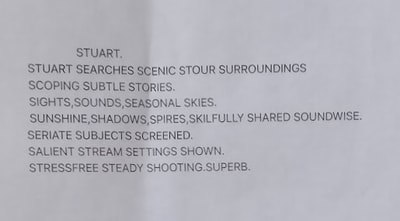
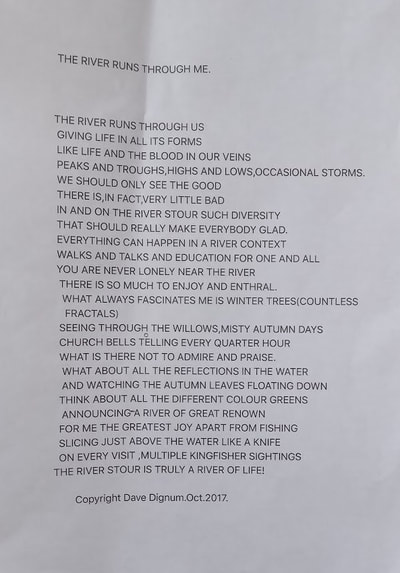
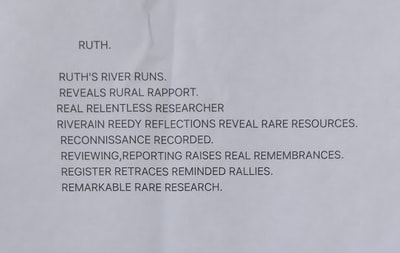
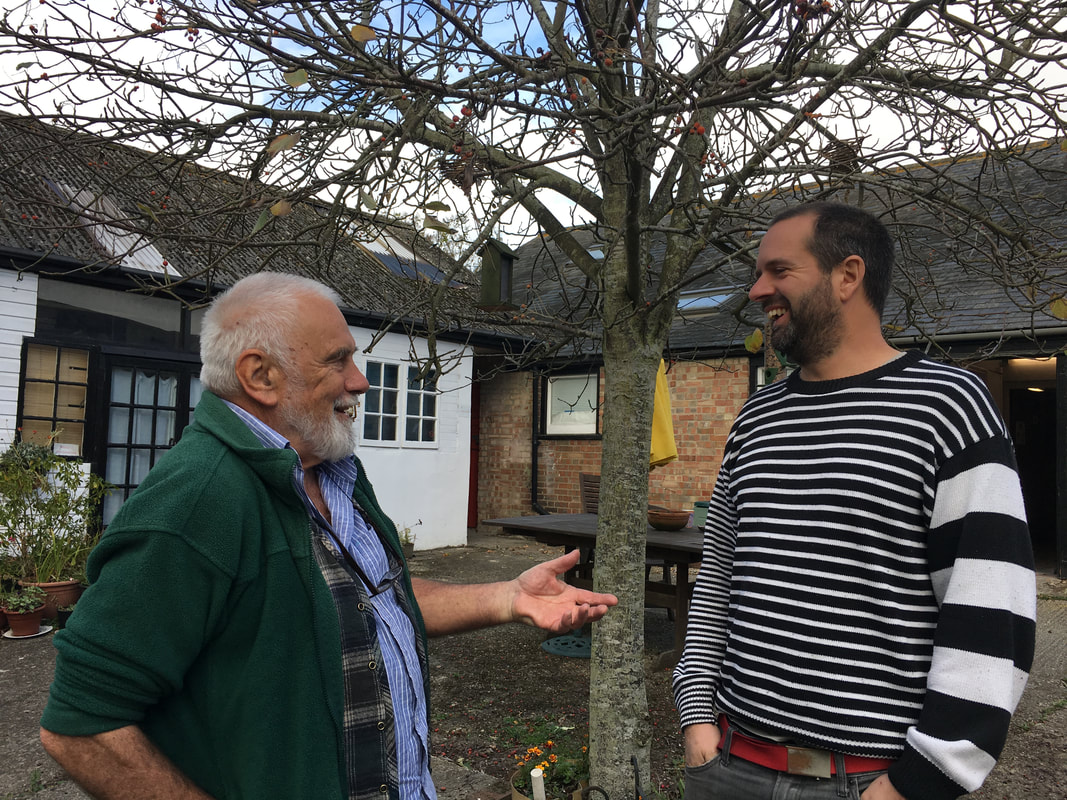
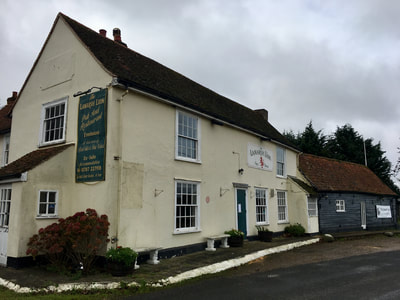
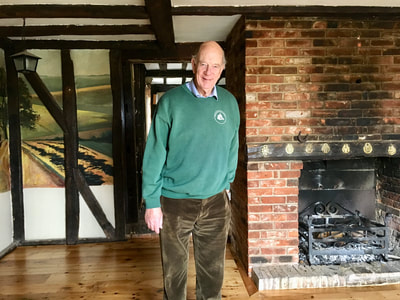
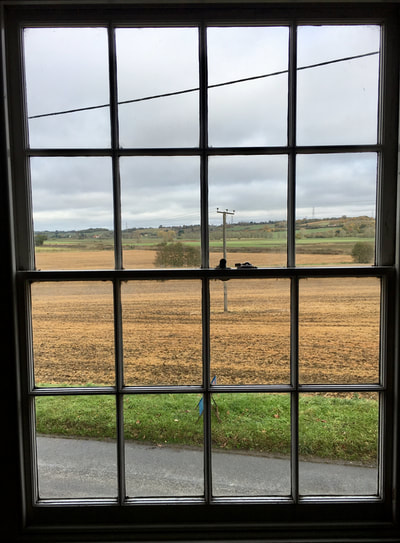
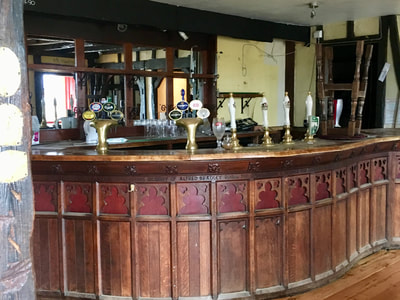
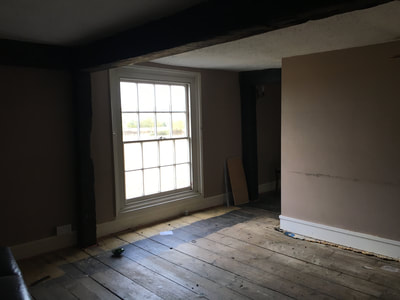
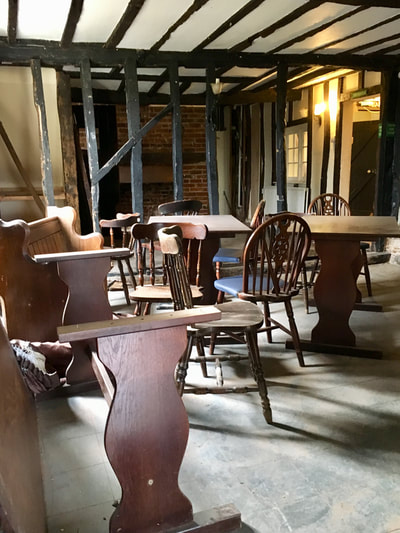
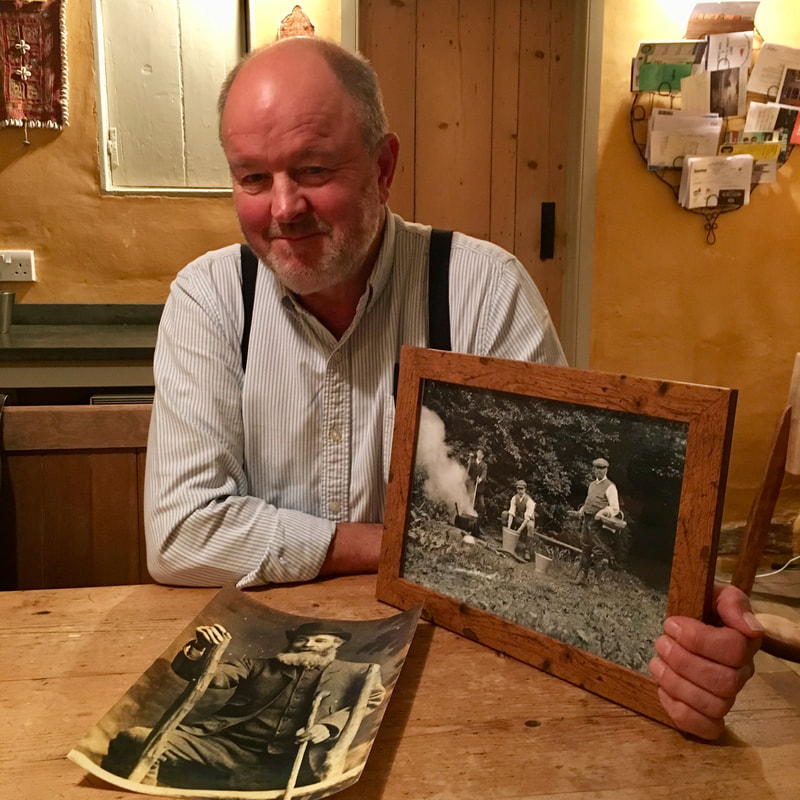
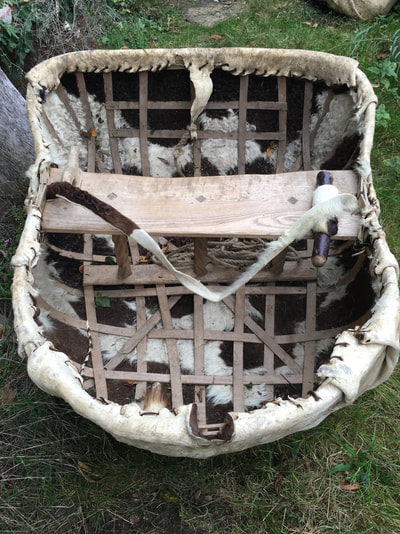
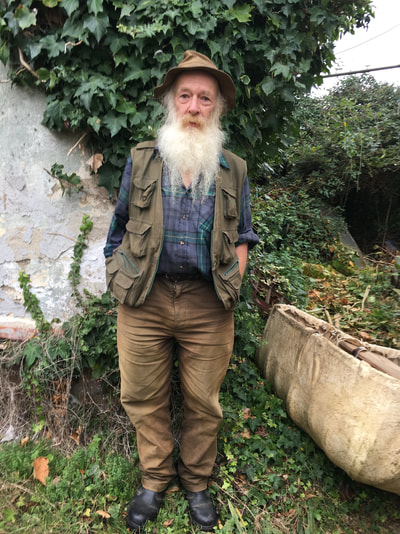
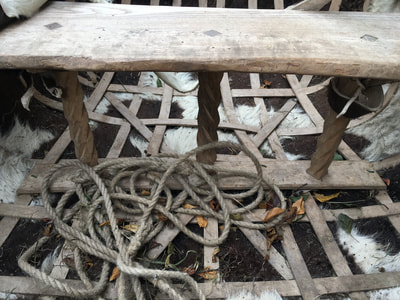
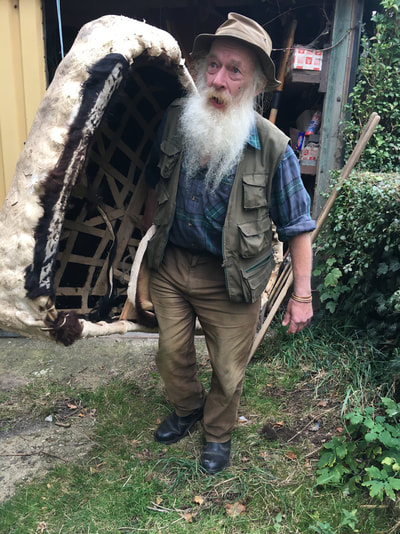
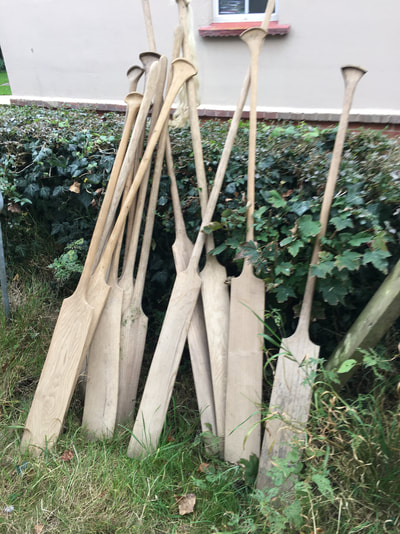
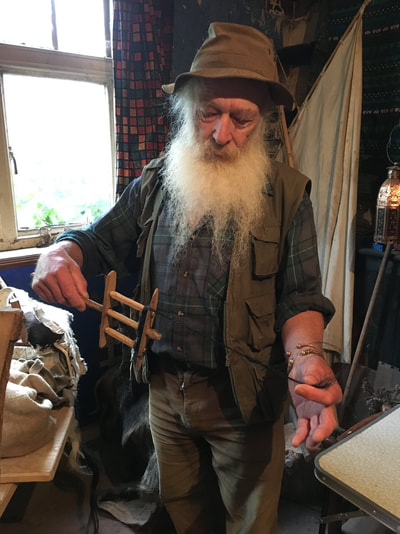
 RSS Feed
RSS Feed